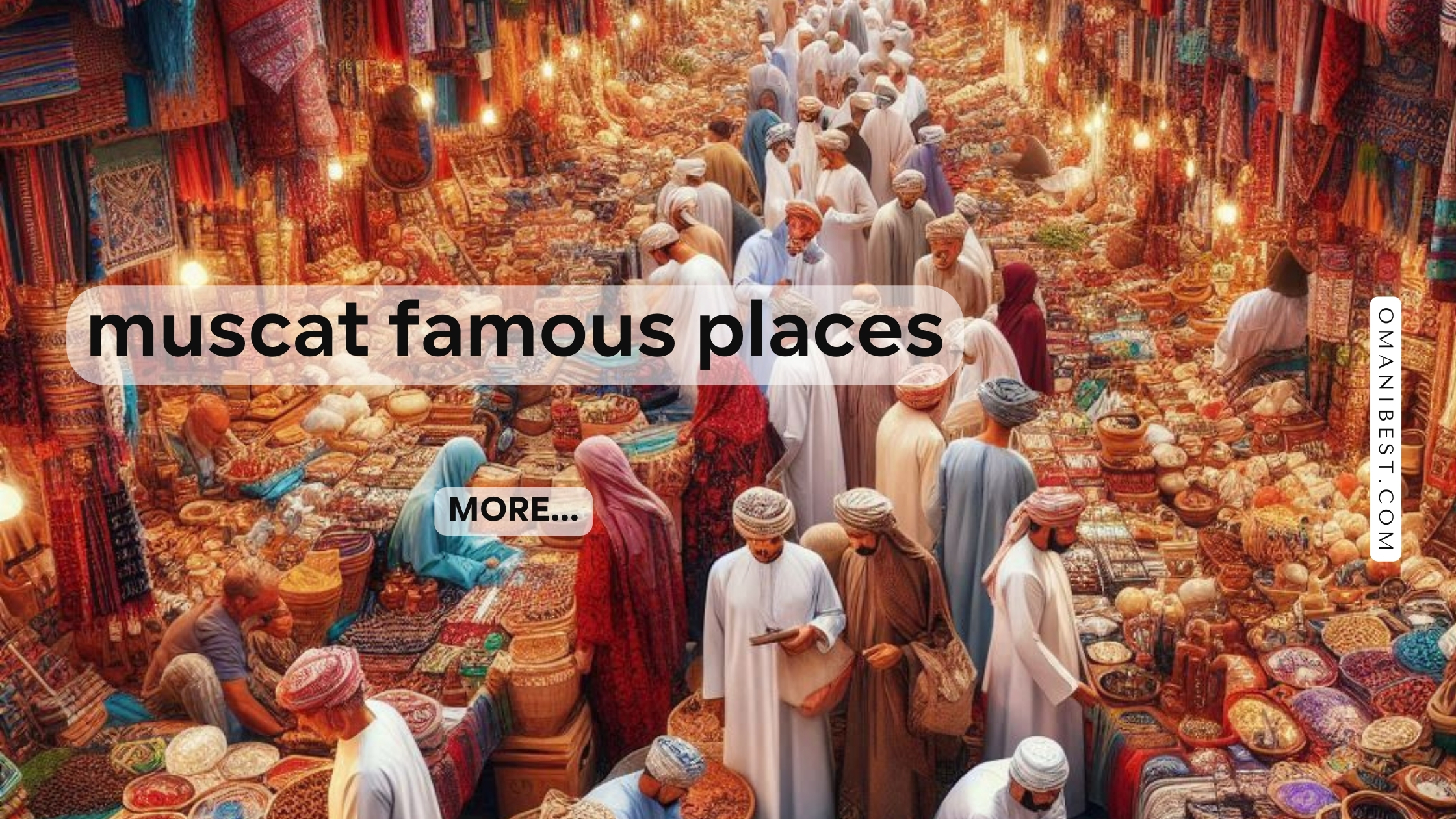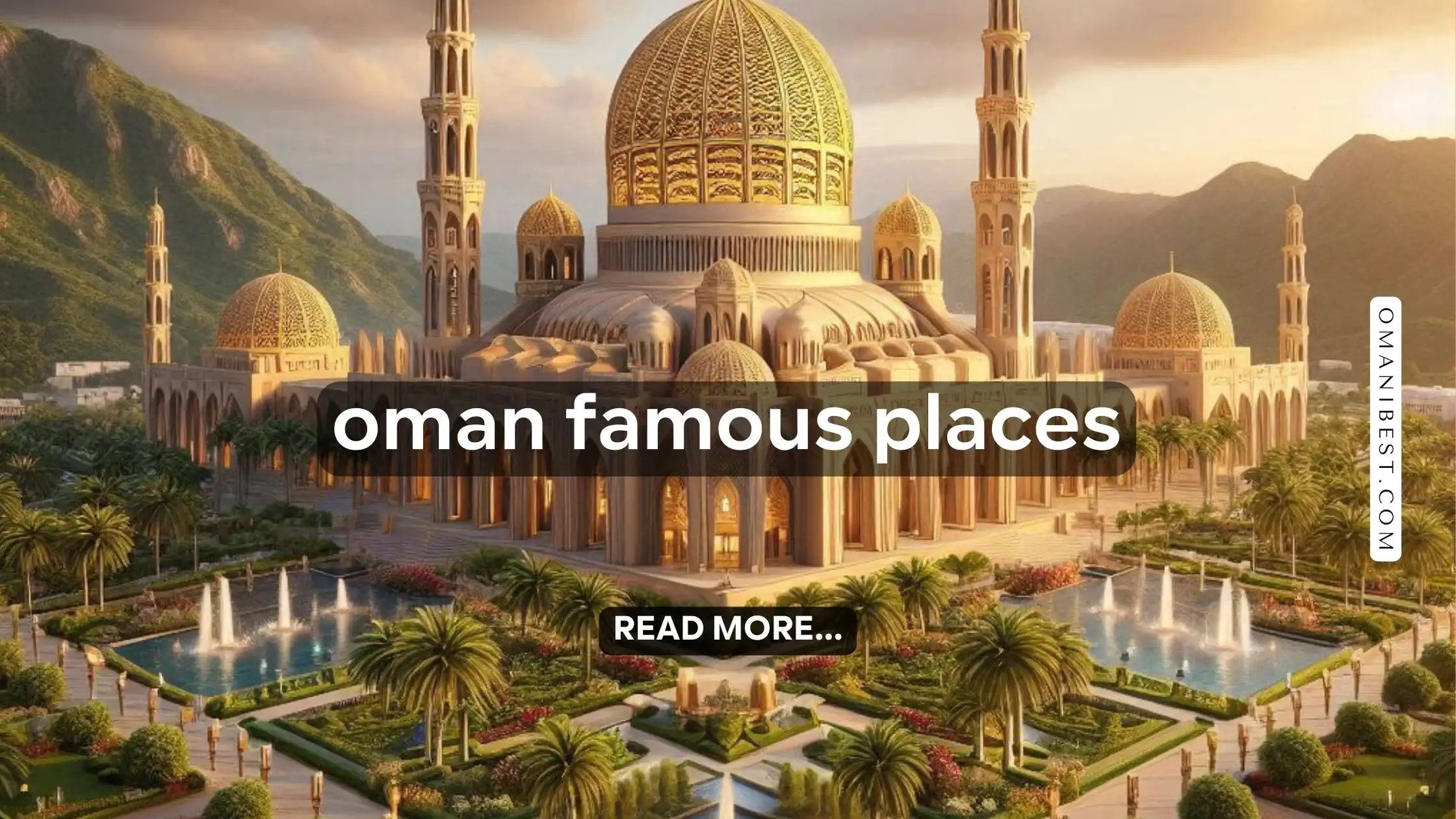muscat famous places
Muscat, the capital of Oman, is a captivating blend of ancient history and modern elegance. This coastal city offers visitors a rich tapestry of cultural, architectural, and natural wonders. From grand mosques and opulent palaces to bustling souqs and pristine beaches, Muscat’s attractions cater to diverse interests. The city’s skyline, framed by the rugged Hajar Mountains and the shimmering Gulf of Oman, provides a stunning backdrop to its many famous sites. Whether you’re a history buff, architecture enthusiast, or nature lover, Muscat’s top destinations promise unforgettable experiences that showcase the best of Omani heritage and hospitality.
top 10 muscat famous places
The city’s top 10 famous places offer a diverse array of experiences, from grand mosques and opulent palaces to traditional markets and scenic coastal promenades. These landmarks showcase the best of Omani heritage, blending ancient traditions with modern developments. Each site tells a unique story of Muscat’s past and present, inviting travelers to explore the city’s intricate tapestry of culture, religion, and natural beauty. Whether you’re interested in history, architecture, or simply soaking in the local atmosphere, these top destinations promise unforgettable memories of Muscat. In the following, we describe the top 10 muscat famous places.
Stay with Omani Bast in this article
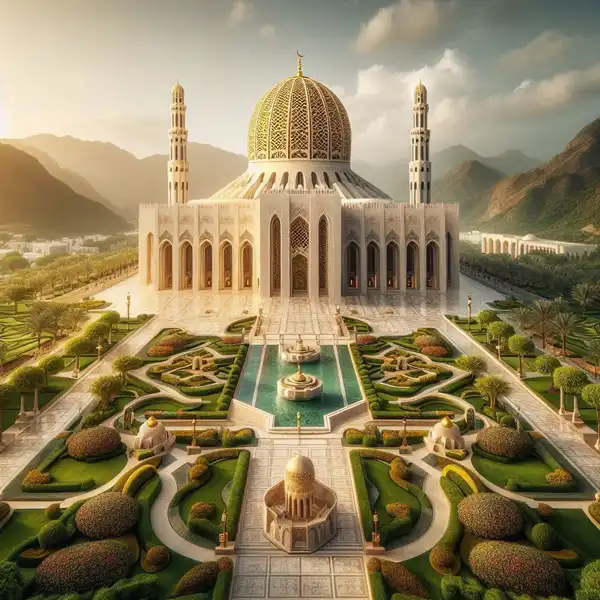
Sultan Qaboos Grand Mosque
The Sultan Qaboos Grand Mosque is a masterpiece of Islamic architecture and Oman’s largest mosque. Completed in 2001, it can accommodate up to 20,000 worshippers. The mosque’s stunning features include a massive Swarovski crystal chandelier, the world’s second-largest hand-woven carpet, and intricate marble paneling. Its main prayer hall is adorned with a beautiful central dome. The mosque’s exterior is equally impressive, with landscaped gardens and five minarets representing the five pillars of Islam. Open to non-Muslims outside prayer times, it offers visitors a glimpse into Islamic art and spirituality.

Royal Opera House Muscat
The Royal Opera House Muscat is a beacon of culture and arts in Oman. Opened in 2011, this architectural marvel blends contemporary design with traditional Omani elements. The venue hosts world-class performances of opera, ballet, and classical music, as well as traditional Omani and Arab shows. Its exquisite interior features Omani marble and intricate wood carvings. The opera house is equipped with state-of-the-art acoustics and stage machinery. With a seating capacity of 1,100, it has become a symbol of Oman’s commitment to cultural enrichment and a must-visit destination for art enthusiasts.
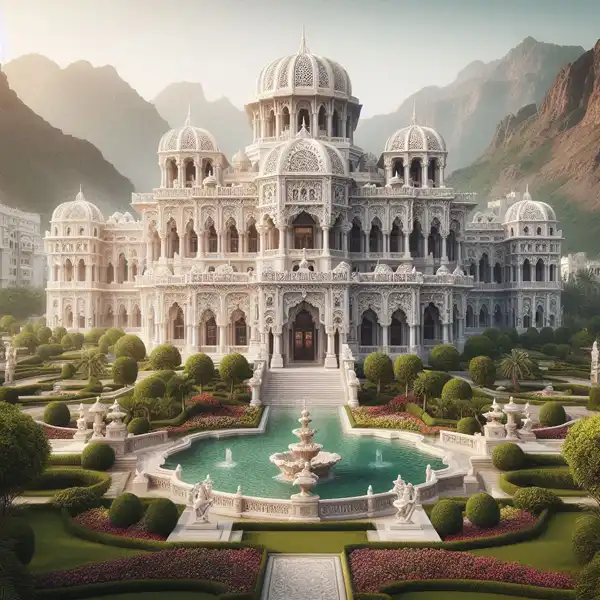
Al Alam Palace
Al Alam Palace, the ceremonial palace of Sultan Haitham bin Tariq, is an architectural gem in Old Muscat. Built in 1972, its distinctive blue and gold columned facade is a striking example of contemporary Islamic design. While not open to the public, visitors can admire its exterior and beautifully landscaped gardens. The palace is flanked by the 16th-century Portuguese forts of Al Jalali and Al Mirani, creating a picturesque scene that blends history with modernity. This royal residence symbolizes Oman’s sovereignty and plays a crucial role in welcoming foreign dignitaries.

Bait Al Zubair Museum
Bait Al Zubair Museum offers a fascinating journey through Omani heritage and culture. Housed in a traditional Omani home, the museum showcases a private collection of artifacts, including traditional weapons, jewelry, costumes, and household items. The museum complex includes several buildings, each focusing on different aspects of Omani life and history. Its ethnographic displays provide insight into Oman’s diverse regions and tribes. The museum also features a gallery of contemporary Omani art, bridging the past and present. With its comprehensive exhibits, Bait Al Zubair is an essential stop for those seeking to understand Oman’s rich cultural tapestry.
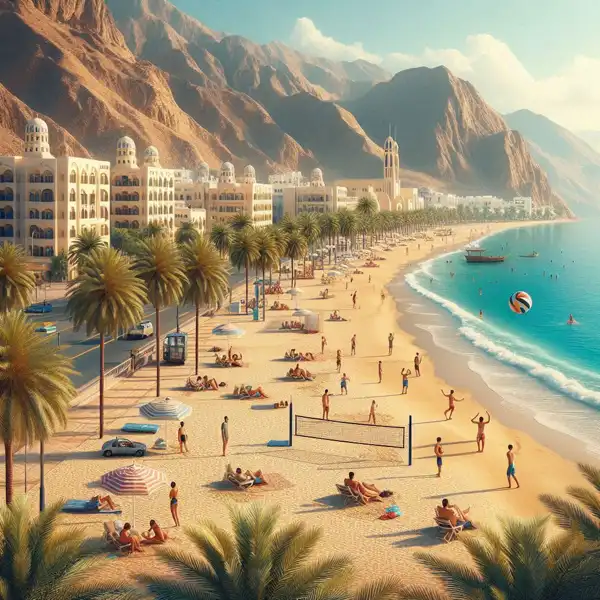
Qurum Beach
Qurum Beach is Muscat’s most popular coastal retreat, offering a perfect blend of relaxation and recreation. This expansive sandy beach stretches for several kilometers along the Gulf of Oman, providing ample space for sunbathing, picnicking, and beachside strolls. The clear waters are ideal for swimming and various water sports. The beach is lined with palm trees and features a picturesque promenade, popular among joggers and cyclists. With nearby cafes, restaurants, and shopping areas, Qurum Beach serves as a vibrant social hub for both locals and tourists seeking a seaside escape. And you should also know how many of the Best beach hotels in Oman are located in this area
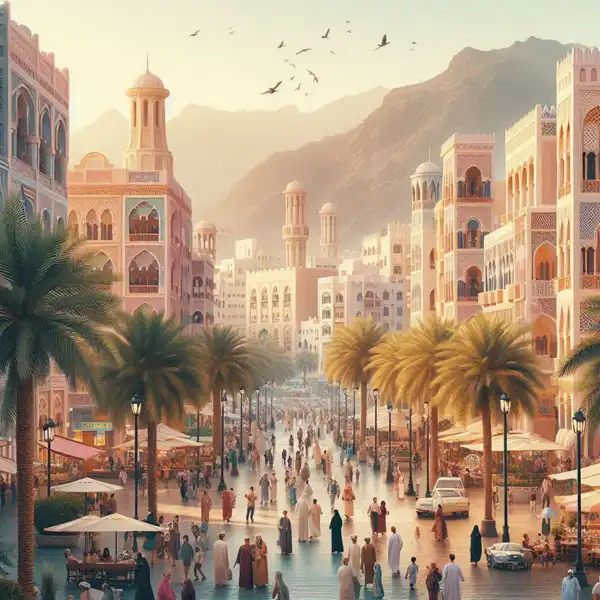
City Centre Muscat
City Centre Muscat is the Sultanate’s premier shopping and entertainment destination. This modern mall features over 200 stores, ranging from international brands to local boutiques and It is known as one of the best malls of Oman. It houses a 10-screen VOX Cinema, a family entertainment center, and a diverse food court offering global cuisines. The mall’s architecture blends contemporary design with traditional Omani elements. With its wide range of shopping options, dining experiences, and leisure activities, City Centre Muscat serves as a one-stop destination for locals and tourists alike, reflecting the city’s modernization while maintaining its cultural roots.

Mutrah Corniche
The Mutrah Corniche is a picturesque waterfront promenade that captures the essence of old Muscat. Stretching along the harbor, it offers stunning views of the Gulf of Oman and the rugged Hajar Mountains. The corniche is lined with traditional architecture, including merchants’ houses with ornate balconies. At one end lies the famous Mutrah Souq, while the other features a park with fountains. The area comes alive in the evening as locals and tourists enjoy leisurely walks, street food, and the cool sea breeze. It’s an ideal spot for photography and experiencing Muscat’s laid-back charm.

Qurum Natural Park
Qurum Natural Park is Muscat’s green oasis, offering a refreshing escape from the urban landscape. Spanning over 137 acres, this lush park features beautifully landscaped gardens, artificial lakes, and walking trails. It’s a popular spot for picnics, jogging, and family outings. The park boasts a variety of recreational facilities, including a Ferris wheel, children’s play areas, and an open-air theater for cultural events. With its diverse flora, including native and exotic species, Qurum Natural Park serves as both a recreational space and an educational resource, promoting environmental awareness among visitors.
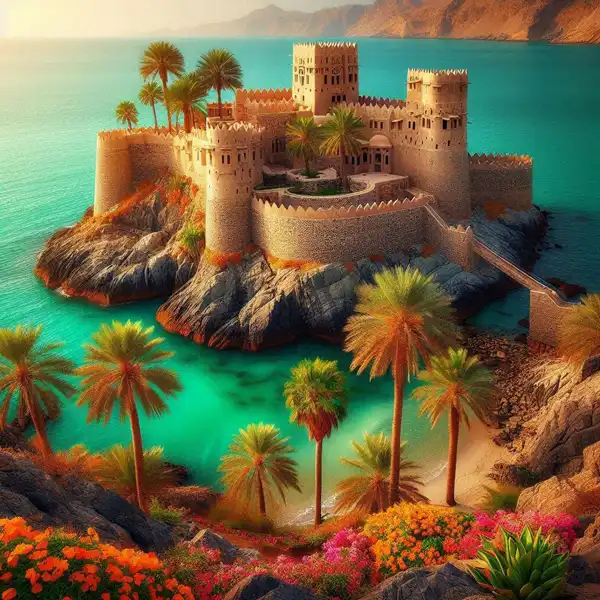
Al Jalali Fort
Al Jalali Fort, perched on a rocky outcrop overlooking the Gulf of Oman, is a testament to Muscat’s strategic importance. Built in the 1580s during Portuguese occupation, the fort has served various purposes throughout history, from a bastion of defense to a prison. Today, it houses a museum of Omani heritage, though access is limited. Its imposing structure, with thick walls and watchtowers, offers panoramic views of the harbor and old Muscat. While not always open to the public, Al Jalali Fort remains an iconic landmark, symbolizing Oman’s rich maritime history.
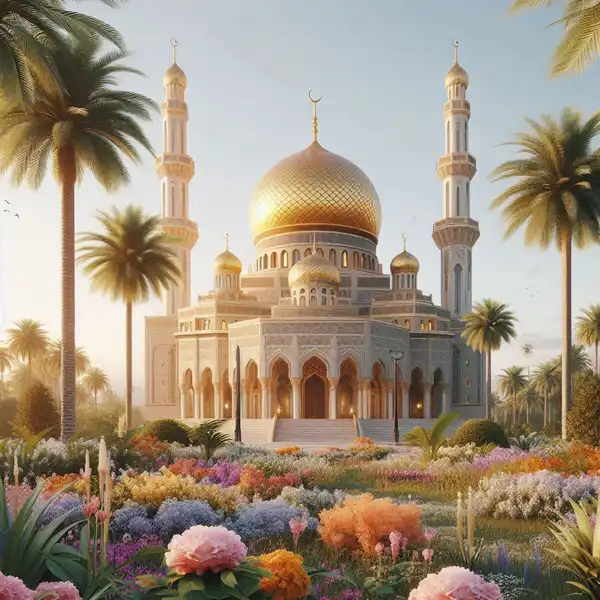
Mohammed Al Ameen Mosque
The Mohammed Al Ameen Mosque, with its striking blue domes and towering minarets, is a relatively new addition to Muscat’s skyline. Completed in 2014, it’s located atop a hill in Bausher, offering panoramic views of the city. The mosque’s design combines traditional Islamic architecture with modern elements, featuring intricate geometric patterns and calligraphy. Its spacious interior can accommodate thousands of worshippers and is adorned with elegant chandeliers and marble work. While primarily a place of worship, the mosque welcomes respectful visitors outside prayer times, providing insight into contemporary Islamic architecture and spirituality in Oman.
What places is Oman known for?
Oman is renowned for its diverse landscapes and rich cultural heritage. Key attractions include the ancient city of Nizwa, the vast Wahiba Sands desert, and the lush Wadi Shab oasis. The country is also famous for its pristine beaches in Salalah, the dramatic fjords of Musandam, and the historic forts scattered throughout the country. Muscat’s Sultan Qaboos Grand Mosque and the traditional souqs are also major draws.
Conclusion
Oman’s blend of natural wonders, historical sites, and modern attractions makes it a captivating destination for all types of travelers. From Muscat’s cultural landmarks to the country’s diverse landscapes, Oman offers unique experiences that showcase its rich heritage and warm hospitality. Whether exploring ancient forts, relaxing on pristine beaches, or wandering through bustling souqs, visitors to Oman are sure to be enchanted by its beauty and charm, leaving with unforgettable memories of this Arabian gem. For more information about Onam, see our sites.

